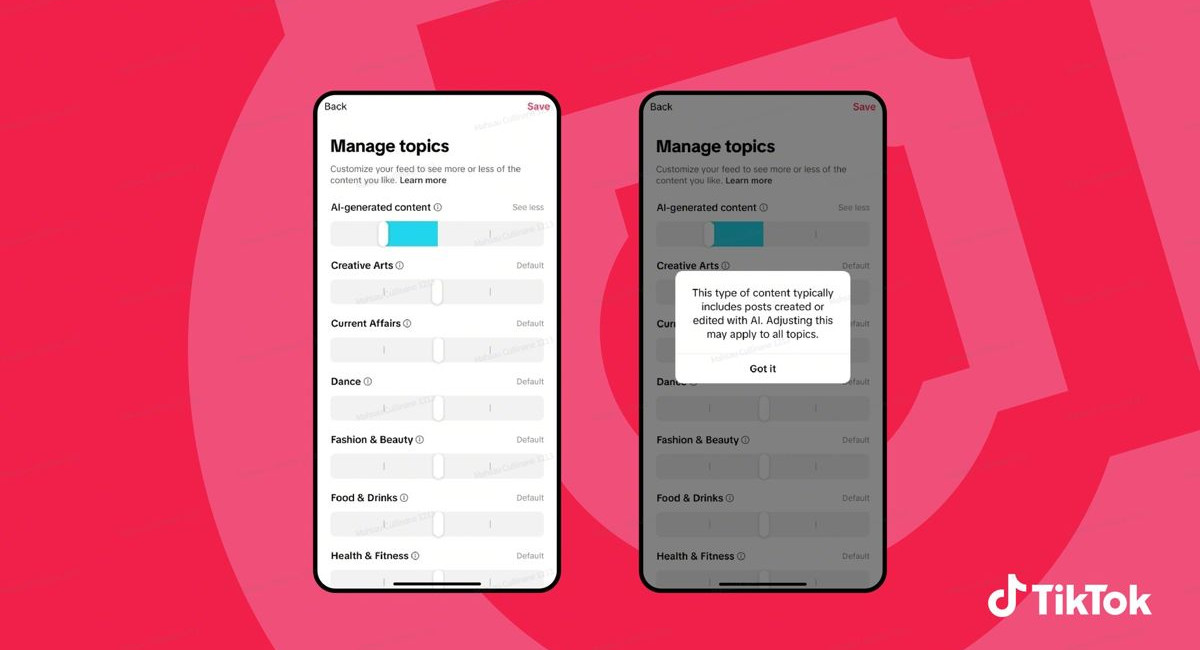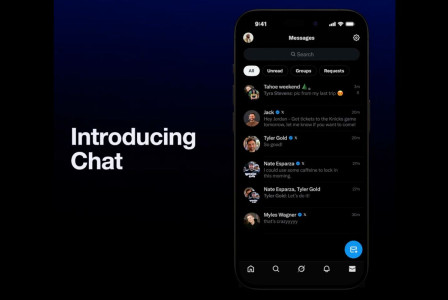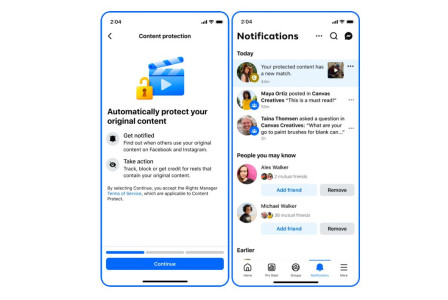SEARCH
TikTok will let users decide how much AI content they see

SHARE IT
TikTok is preparing to give its users more control over the type of videos that show up on their For You Page, particularly when it comes to the growing wave of AI-generated content. The company has begun testing a new feature that allows people to adjust how frequently AI-made videos appear in their feed, offering a more personalized experience at a time when machine-generated clips are becoming increasingly hard to avoid.
The new control takes the shape of an AI-specific slider, which will sit alongside TikTok’s existing topic filters under the Manage topics section. Today, that menu already lets users fine-tune the frequency of categories like dance trends, current affairs, fitness, and more. With the addition of the AI slider, users will be able to request either more or less AI-generated content, using a scale that moves in two levels in either direction. It’s designed to make the app feel more tailored, whether someone enjoys AI-created videos or wants to keep their feed focused on human-made material.
Of course, none of this is possible unless TikTok can reliably identify what’s created by artificial intelligence. The platform acknowledges that it still faces challenges in this regard. Until now, TikTok has largely relied on visible watermarks to mark videos produced using its AI tools. But creators frequently crop out or remove these indicators to avoid the labeling, which weakens TikTok’s ability to categorize content accurately.
To address this, the company is adding a new layer of detection. TikTok will begin embedding invisible watermarks into content made with its first-party AI tools, like AI Editor Pro. These markings won’t be visible to the human eye but can be detected by TikTok’s systems, helping the platform classify videos with greater certainty. TikTok also plans to apply similar detection to videos that include C2PA Content Credentials, an industry-backed metadata framework used to verify the provenance of photos and videos.
The C2PA standard has gained traction across the tech industry, with major companies adopting it as part of wider efforts to fight misinformation and clarify when AI is used in media creation. However, it’s far from perfect. Researchers have repeatedly demonstrated that the credentials can be removed, forged, or corrupted, which limits their effectiveness as a foolproof verification system. TikTok’s decision to combine C2PA tagging with its own invisible watermarking signals an attempt to strengthen detection through a layered approach rather than relying on one method alone.
TikTok says these changes will begin rolling out in the coming weeks. The invisible watermark system is positioned as a permanent update, but the AI content slider is still considered an experiment for now. Depending on feedback and performance, the company could expand the feature to more users or refine how it works.
MORE NEWS FOR YOU

 Help & Support
Help & Support 

